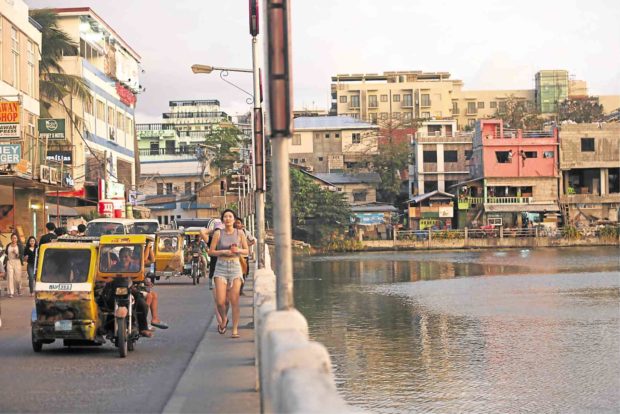Boracay wetlands settlers next target of gov’t task force

VANISHING WETLANDS Boracay’s remaining wetlands continue to shrink as hotels, buildings and houses rise on the resort island in Aklan province. —LYN RILLON
The government on Tuesday vowed to remove illegal settlers on wetlands on Boracay Island, citing the high levels of pollution supposedly due to settlements near bodies of water.
Environment Secretary Roy Cimatu on Tuesday said the interagency task force on Boracay rehabilitation would go after illegal settlers on wetlands to sustain the government’s efforts to revive the island’s ecosystem.
“We do not only need to clean the wetlands in order to sustain water quality along the beach. We need to restore their functions as natural filters and water reservoirs,” Cimatu said.
The Department of Environment and Natural Resources (DENR) has identified nine wetlands in the 1,032-hectare Boracay, but only six may still be revived.
High coliform levels
Article continues after this advertisementCimatu, who heads the task force, said illegal settlers on the banks of wetlands should be removed to reduce the level of coliform bacteria in the water.
Article continues after this advertisementTwo of these wetlands, he said, were found to be high in coliform, supposedly due to the presence of illegal settlers: Wetland 3 near Bulabog beach and Wetland 6 in the villages of Balabag and Manoc-Manoc.
Cimatu earlier lauded the move of Boracay business owners, whose establishments were affected by road-widening activities and the crackdown against illegal sewage pipelines, to demolish their structures.
Other establishments along the main road agreed to demolish portions of their buildings with “overhang” or floors protruding over the road easement.
Cimatu also said water quality around Boracay had significantly improved, and rehabilitation efforts were “on target” of its six-month rehabilitation.
On Tuesday, environment activists picketed the DENR central office in Quezon City, criticizing the government’s Boracay rehabilitation as “unjust, unscientific and untransparent.”
Independent validation
Twenty members of Kalikasan People’s Network for the Environment demanded the immediate reopening of Boracay to restore the jobs of 24,000 workers.
They also asked the DENR to allow an independent validation of the impact of the closure on the island and its residents.
“The government likes to announce … that Boracay is now clean after two months of closure; that’s nothing but fake news unless they allow independent groups to check,” said Leon Dulce, Kalikasan national coordinator.
Feny Cosico, secretary general of Advocates of Science and Technology for the People (Agham), assailed the government for making residents of Boracay suffer from the closure.
“Why are the residents not consulted on the government’s rehabilitation plans? Why can’t the government allow its activities to be scrutinized by independent parties?” she asked.